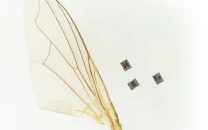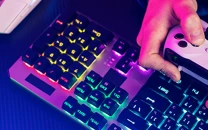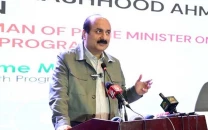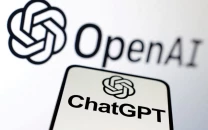Boeing's troubled Starliner spacecraft returns to Earth without crew
The spacecraft left the ISS on Friday, bound for Earth without astronauts after Nasa deemed the risk too great.
1725186755-0/BeFunky_-(3)1725186755-0-640x480.webp)
Boeing’s problem-plagued Starliner landed uncrewed at White Sands Space Harbour in New Mexico late on Friday, capping a three-month test mission hobbled by technical issues that forced the astronauts it had flown to the International Space Station (ISS) to remain there until next year.
The spacecraft left the ISS earlier on Friday, bound for Earth without astronauts after Nasa deemed the risk too great.
The century-old aerospace giant’s reputation has taken a hammering over thruster malfunctions and helium leaks its spaceship encountered on its way up to the orbital outpost in June, and the US space agency’s subsequent decision to fly its crew back on a rival SpaceX Crew Dragon next year.
“It is time to bring Calypso home,” astronaut Suni Williams told mission control, using the spaceship’s nickname. “We have your back and you’ve got this, bring her back to Earth. Good luck.”
Starliner returned to Earth seemingly without a hitch, a Nasa live stream showed, nailing the critical final phase of its mission.
The spacecraft re-entered Earth’s atmosphere at orbital speeds of roughly 27,400km/h. About 45 minutes later, it deployed a series of parachutes to slow its descent and inflated a set of airbags moments before touching down in the arid desert in New Mexico.
Nasa opted to bring the ship home without astronauts Butch Wilmore and Williams despite Boeing’s assurances of a safe flight.
The company carried out extensive ground testing that aimed to replicate the technical hitches the spaceship had experienced on its ascent, and devised plans to prevent more problems.
In the end, however, Boeing could not convince Nasa it could be trusted to bring back the pair, who were originally meant to stay on the ISS for roughly a week as they tested out Starliner, but will now remain there until February 2025.
Wilmore and Williams, stocked with extra food and supplies on the ISS, will return to Earth on a SpaceX vehicle in February. What was initially supposed to be an eight-day test has turned into an eight-month mission for the crew.
“Boeing believed in the model that they had created that tried to predict the thruster degradation for the rest of the flight,” Steve Stich, programme manager for Nasa’s Commercial Crew Programme, told reporters this week.
But “the Nasa team, due to the uncertainty in the modelling, could not get comfortable with that”, he added, characterising the mood during meetings as “tense”.
Nasa astronauts Butch Wilmore and Suni Williams pose in Cape Canaveral, Florida, in April. Photo: Reuters
Nasa astronauts Butch Wilmore and Suni Williams pose in Cape Canaveral, Florida, in April. Photo: Reuters
Shortly after undocking, Starliner performed a powerful “breakout burn” that shot it well clear of the station to prevent any chance of a collision – a manoeuvre that would have been unnecessary if it had crew aboard who could take manual control of the ship if needed.
Following that, mission teams conducted thorough checks of its thrusters in preparation for the critical “deorbit burn,” required to guide the capsule onto its re-entry path around 40 minutes before landing.
While expectations were high that Starliner would stick the landing, as it had in two previous uncrewed tests, Nasa will now carefully review all aspects of the mission’s performance before deciding on the next steps.
Stich emphasised that Nasa was focused on completing the immediate tasks at hand.
“When we do that, we’ll have a better understanding of when can we certify the vehicle and when can we resume flights,” he said.
Nasa awarded Boeing and SpaceX multibillion-dollar contracts a decade ago to develop spacecraft to ferry astronauts to and from the ISS, following the retirement of the Space Shuttle.
Elon Musk’s SpaceX, however, beat Boeing to the punch, successfully flying dozens of astronauts since 2020.



















COMMENTS
Comments are moderated and generally will be posted if they are on-topic and not abusive.
For more information, please see our Comments FAQ